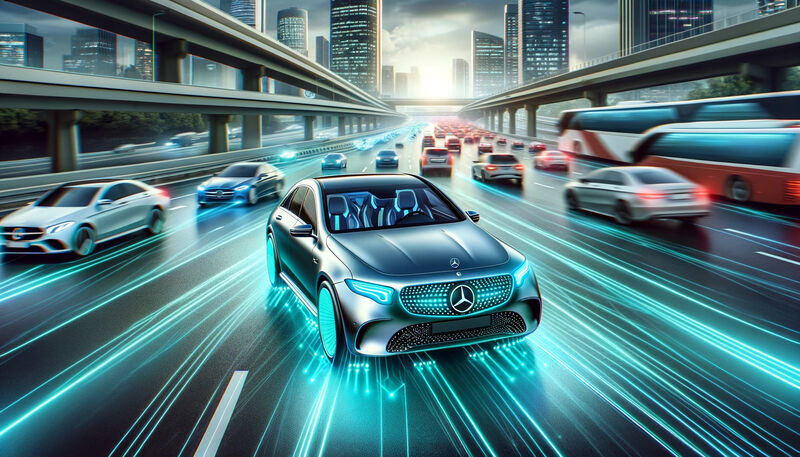Mercedes Surpasses Tesla with First Level 3 Autonomous Vehicle Sale in the U.S
German luxury automaker Mercedes has officially outpaced Tesla in the race for autonomous driving technology by selling the first Level 3 capable vehicle in the United States, as reported by Fortune. The breakthrough feature, named Drive Pilot, allows drivers to divert their attention from the driving task under specific conditions, marking a significant milestone in automotive innovation.
Drive Pilot vs. Tesla’s Full Self-Driving Capability
While Tesla’s CEO Elon Musk has long promoted the Full Self-Driving (FSD) capabilities of his vehicles, these systems still require the driver’s constant attention and manual intervention. Despite recent updates bringing Tesla's FSD closer to full autonomy, it remains classified under Level 2 by the Society of Automotive Engineers (SAE) standards, which necessitates that drivers keep their eyes on the road and hands on the wheel.
In contrast, Mercedes' Drive Pilot has been approved for Level 3 autonomous driving in California and Nevada—states known for their progressive stance on autonomous vehicle regulation. This system allows the vehicle to handle all aspects of driving in certain scenarios without driver intervention, although it is limited to speeds of 40 miles per hour or less and only on specific freeways approved by Mercedes.
How Drive Pilot Works
Launched initially in Germany in May 2022 and introduced to the U.S. market in December of the same year, Mercedes has equipped the Drive Pilot system in select EQS Sedans and S-class models. According to DMV records, at least one Californian resident has already received their vehicle equipped with this advanced technology, which costs $2,500 per year for a subscription.
Safety and Future Prospects
Despite the advanced capabilities of Drive Pilot, Mercedes has implemented stringent safety protocols to ensure the system is used responsibly. It is only operational under certain conditions like daylight and within designated areas to minimize risks. Additionally, the system requires the driver to resume control promptly when alerted by the vehicle.
Mercedes is not only enhancing vehicle safety but also experimenting with unique identification features like turquoise lighting for tail lights and mirrors, signaling when the vehicle is in autonomous mode. This is part of Mercedes' broader strategy to eventually transition to Level 4 autonomy, which allows for nearly full autonomous driving with minimal human intervention.
Challenges and Competition
While Mercedes pushes forward, it faces stiff competition from other tech companies like Waymo and GM’s Cruise, which already operate Level 4 autonomous fleet vehicles in the U.S. However, the commercial sale of such advanced autonomous technology to individual consumers by Mercedes marks a significant advancement over fleet-only applications by other companies.
The introduction of Level 3 autonomous vehicles by Mercedes poses a new challenge to Tesla and other automakers aiming to lead in the autonomous driving space. As regulations evolve and technology advances, the automotive industry stands on the brink of a new era in transportation.
This development could have profound implications for the future of autonomous driving, setting new benchmarks for safety and technology integration. Mercedes' achievement with Drive Pilot illustrates the ongoing transformation of the automotive landscape, where luxury, safety, and innovation intersect at the cutting edge of technology.

